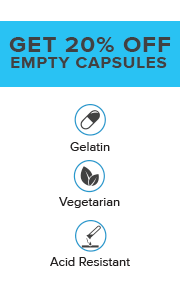| FREE TRIAL FORMULATIONS MY ACCOUNT | |
 | |
| Our Compounding Knowledge, Your Peace of Mind | |
| August 30, 2019 | Volume 16 | Issue 35 | |
| ||||||||||||||||||||||||||||||||||||||||||
| ||||||||||||||||||||||||||||||||||||||||||
|
Question: Why are the BUDs for oils used as compounding vehicles limited to 90 days but the same identical oils in manufactured products may have expiration dates of several years? Answer:
“The BUDs in Table 3, which are assigned based on the consideration of stability, compatibility, and microbial proliferation in the CNSP, will be maintained. The BUD framework takes into consideration water activity and the susceptibility of some oils or fatty acid bases (e.g., nonaqueous formulations) to be reactive to certain substances.� 1. We have already established that “water activity� (USP <1112>) does NOT discuss chemical stability and is concerned with “reduced microbial limits testing.� 2. In this Newsletter, we look at the lack of scientific basis concerning the BUDs based on water activity for oil vehicles and suppository bases. From the USP monographs:
NMT = not more than Actual water content in the listed
In summary, the water content of the oils is extremely low, and water activity should be negligible; this supports the multi-year expiration dates for commercial products. It is evident from the above that solid diluents in compounded tablets and capsules contain much more water than oils but receive a BUD of up to 6 months, whereas oil vehicles and suppository bases are limited to 3 months and the oils are essentially “dry.� In the powders, even though some of the water may be bound, some will be unbound and when exposed to stress, some bound water becomes unbound. The argument that the water contained in the oils is so problematic globally that the BUD is reduced from 180 days to 90 days is without foundation. The USP bulletin statement also reads, “and the susceptibility of some oils or fatty acid bases (e.g., nonaqueous formulations) to be reactive to certain substances.� This statement should be supported by examples. As a practical matter, when there is a problem, it should be reported, published, and placed in data bases so that the specific combination will not be compounded; this is the same procedure that has been in common use for decades involving stability and compatibility issues. This approach is not new and should be used here. There appears to be no support for the BUD of APIs in oils to be limited to 90 days. If there is an API that does pose stability issues, that can be handled as previously mentioned, but the remainder of the APIs should be allowed to be formulated in oils with a BUD of up to 6 months. In other words, why throw out the baby with the bathwater and penalize patients who would be required to get more frequent and more costly refills, etc.? Further, lactose monohydrate may contain up to 5.5% water and starch up to 15% water. When compounded in capsules or tablets, they receive a BUD of 180 days and manufactured products receive an expiration date of several years; however, with significantly less water, if the same API is placed in an oil or suppository vehicle/base, the BUD is only 3 months. Seems problematic and without scientific support!
When there is an issue of stability or incompatibility of a specific API with a specific vehicle/diluent/base, the information can easily be published and placed into databases so it will not be compounded in that specific vehicle. It is unreasonable to prohibit the use of stable drugs in oils and suppository bases just because something “Might Happen� or even if it has occasionally happened. If it has happened, this information should be published as previously mentioned so that longer BUDs can be used and patients can benefit without being penalized from scientifically unsupported standards.
| ||||||||||||||||||||||||||||||||||||||||||
|
Announcement
| ||||||||||||||||||||||||||||||||||||||||||
|
Did You Know ... …that many writers and groups (Government, Commercial, etc.) use the “sky is falling� technique to establish a sense of urgency and demand for their products and services or to get their way? Also, oftentimes statements are made that are not just misleading…they are untrue. This is really problematic if the public is not well educated on the topic. For example, phrases like: “Each year, more than X million people are potentially exposed to XXXX!� | ||||||||||||||||||||||||||||||||||||||||||
|
Tip of the Week Notice that the numbers are “guesses� or “estimates� and often greatly exaggerated, and terms such as “potentially,� “may be,� and others are used to instill a since of urgency in the reader’s mind to accept what is being said and to take action by believing it and spreading it to others. Also, since when did we work or do something to “deserve� the something they are promoting. This occurs in the media, on the Internet, in advertising, and in government agencies as well. This type of self-promotion is largely misleading, oftentimes is untruthful, and it does a disservice to the public. | ||||||||||||||||||||||||||||||||||||||||||
|
IJPC Now on Facebook and Youtube Become a fan of the IJPC Facebook page and share ideas, photos, and keep up to date with the latest compounding information - http://www.facebook.com/IJPCompounding View our growing collection of educational and training videos at www.ijpc.com/video or by subscribing to our Youtube channel at https://www.youtube.com/IJPCompounding. | ||||||||||||||||||||||||||||||||||||||||||
|
Looking Back The ladies take one whiff,
|
| Copyright 2019 International Journal of Pharmaceutical Compounding, Inc. 122 N Bryant Ave, Edmond OK 73034 |
Manage my Email: Subscribe / Un-Subscribe |
Comments or Questions: info@compoundingtoday.com |
|
| Reprints & Permissions: Reprints@ijpc.com | |||



